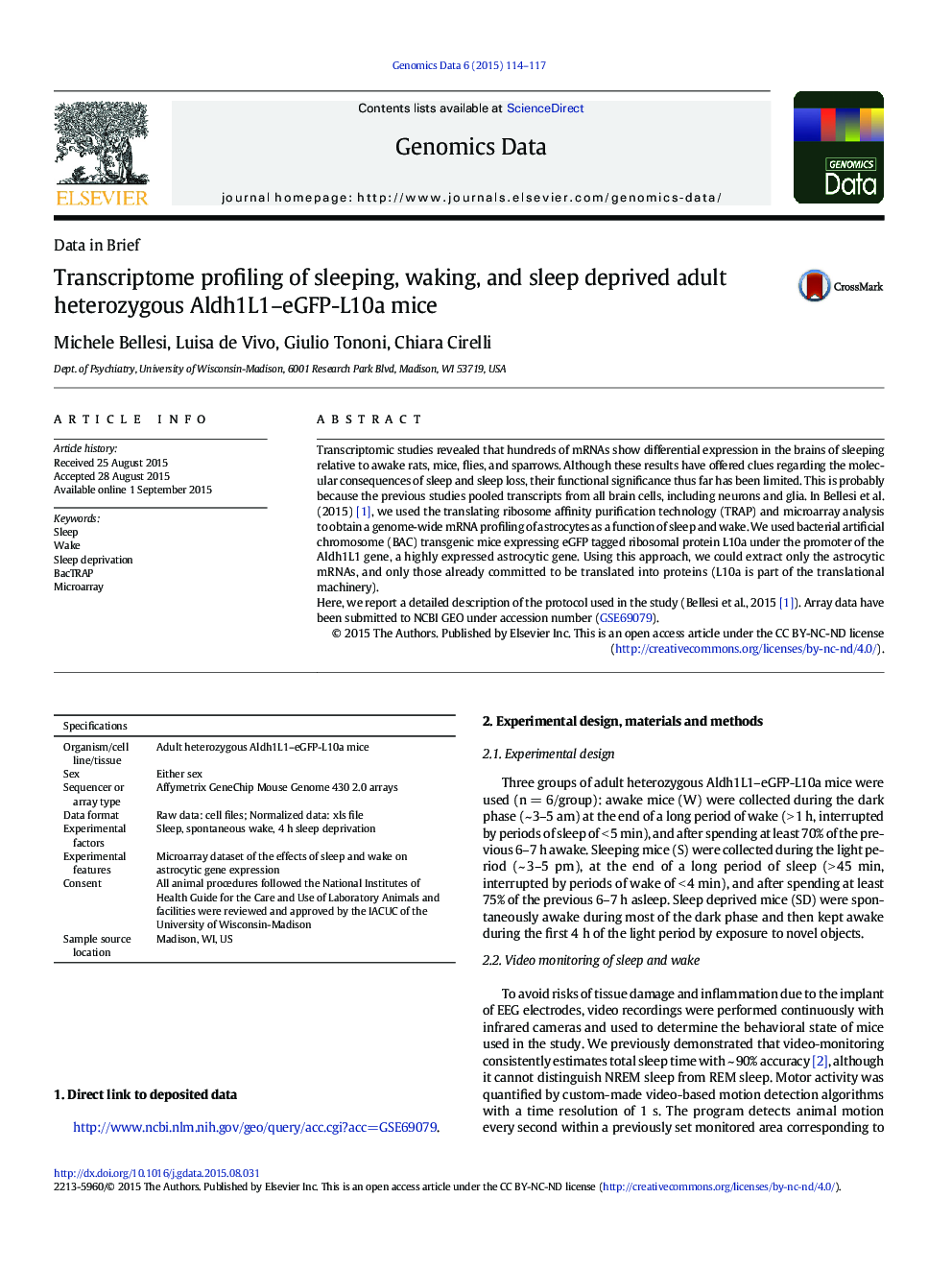| Article ID | Journal | Published Year | Pages | File Type |
|---|---|---|---|---|
| 2822027 | Genomics Data | 2015 | 4 Pages |
Transcriptomic studies revealed that hundreds of mRNAs show differential expression in the brains of sleeping relative to awake rats, mice, flies, and sparrows. Although these results have offered clues regarding the molecular consequences of sleep and sleep loss, their functional significance thus far has been limited. This is probably because the previous studies pooled transcripts from all brain cells, including neurons and glia. In Bellesi et al. (2015) [1], we used the translating ribosome affinity purification technology (TRAP) and microarray analysis to obtain a genome-wide mRNA profiling of astrocytes as a function of sleep and wake. We used bacterial artificial chromosome (BAC) transgenic mice expressing eGFP tagged ribosomal protein L10a under the promoter of the Aldh1L1 gene, a highly expressed astrocytic gene. Using this approach, we could extract only the astrocytic mRNAs, and only those already committed to be translated into proteins (L10a is part of the translational machinery).Here, we report a detailed description of the protocol used in the study (Bellesi et al., 2015 [1]). Array data have been submitted to NCBI GEO under accession number (GSE69079).
